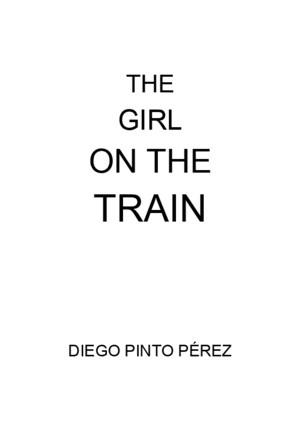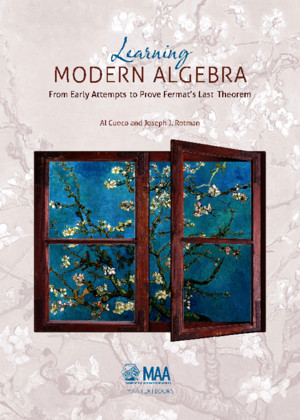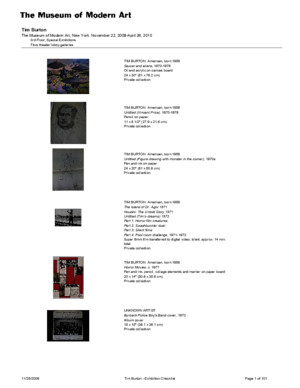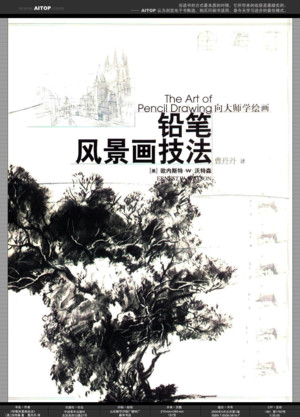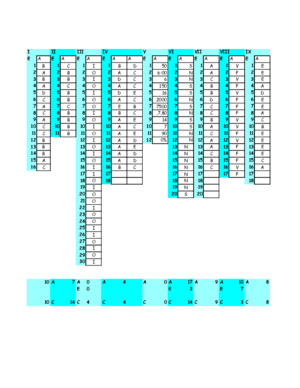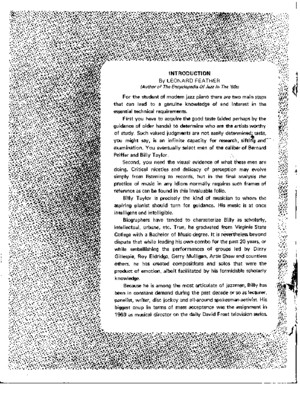The Early Modern Period
There is document - The Early Modern Period available here for reading and downloading. Use the download button below or simple online reader.
The file extension - PDF and ranks to the School Work category.
Tags
Related
Comments
Log in to leave a message!
Description
Download The Early Modern Period
Transcripts
165 THE EARLY MODERN PERIOD 12 Jonathan Dewald Few historical labels conceal so much uncertainty as‘‘early modern Europe’’ The authors of fifteen late-twentieth-centurytextswhosetitlesincludethephrasedate the beginning of the period variously between1350 and 1650, with 1500 the plurality choice, andits end between 1559 and 1800 The three-century difference of opinion over when the period beginsequals the length of the period itself, as most of thesehistorians understand it; one historian sees the periodending almost a centurybeforeanother’sstartingpointThe present article defines the period as extending from 1590 to 1720 Thus envisioned, it starts withthe last spasms of Europe’s religious wars; theseopeneda period of extreme political violence across the con-tinent, and coincided with a variety of other disrup-tions of Europeans’ daily lives The early eighteenthcentury brought this period of instability to a closeBy 1720 religion had declined as a factor in Europeanpolitics, andthe Enlightenment’scritiqueoforganizedreligion had begun The last of Louis XIV’s great warsended in 1713, opening a period of relativepeace,andby happy coincidence Europe’s most frightening dis-ease, the plague, disappeared from theContinentafter1720 A series of other changes in European socialorganization added to the sense of relative security that would characterize the eighteenth century Di-vergences of this order partly reflect historians’ use of ‘‘early modern’’ as a handy catch-all term for a con-fusing period, whose contours shift according to na-tional and thematic perspectives; but they also resultfrom important interpretive differences THE PROBLEM OF PERIODIZATION Historians’ understanding of the early modern periodhas been affected by their differentviewsofmodernity itself, whose foundations are commonly seen to havebeen established at some point between the Renais-sance and the French Revolution; differences of per-iodization reflect different ideas about the crucial mo-ments in modernity’s unfolding Such uncertaintiesare the less easily resolved in that seventeenth-century men and women already believed in their own mo-dernity In 1687 the French writer and architectCharles Perrault launched the ‘‘quarrel of the ancientsand the moderns’’ with the claim that recent artistsand writershadadvancedfarbeyondanythingachievedin the ancient world His claims with regard to thearts stimulated hot debate, but by that time recentadvances had made modernism self-evidently persua-sive in the domains of science and philosophyEspecially since World War II, historians of theearly modern period have interested themselves in a second set of interpretive concerns, in some tension with this interest in finding the roots of modernityEuropeans’ own experiences of industrialization andtheir interest in economic development elsewhere en-couraged historians to reflect on the break betweenpreindustrial and industrial societies, and to see in in-dustrialization the crucial difference between modernand premodern worlds Such interpretations set theearly modern period within a much larger premodernera, and indeed suggested that the break between me-dieval and early modern mattered far less than thehistorical changes of the later eighteenth and early nineteenth centuries, the early phase of the industrialrevolutionDuring the 1960s and 1970s, European histo-rians workingwithin severalindependentnationaltra-ditions offered interpretations of this kind, seeing inthe age of industrial and political revolutions around1800 a break in human history more important thanany since the invention of fixed agriculture In FranceEmmanuel Le Roy Ladurie used the phrase ‘‘immo-bile history’’ to suggest that society changed little be-tween the mid-fourteenth and the mid-eighteenthcenturies Stagnant agricultural technology underlay this immobility, for food production set the limits toeconomic enterprise of all kinds Population rose ingood times, eventually approaching the limit of soci-ety’s ability to feed itself; since food prices rose withpopulation, discretionary income that might havebeenspent on industrial products or long-terminvestments SECTION 2: THE PERIODS OF SOCIAL HISTORY 166 disappeared Famine, war, and disease (often con- joined) eventually cut population back, freeing re-sources and according the survivors a temporary pros-perity, before the whole cycle of growth and crisisbegan again Le Roy Ladurie was concerned mainly with France, but his work coincided with similarideasthat were developed in Germany by such historiansas Werner Conze and Reinhart Koselleck By compari-son with the momentous changes around 1800, dif-ferences such asthatbetweenmedievalandearlymod-ern periods could have little importance During thesame years, the English historian Peter Laslettlikewisedeveloped a vision of the early modern period assharply set off from modernity, a ‘‘world we have lost’’(in his famous phrase), governed by specific forms of social and familial organization, and thereforemarkedby specific worldviews as well Although these French, German, and Britishapproaches to the early modern period differ in sig-nificant ways, if only because they deal mainly withtheir own national histories, they share an emphasison the gap between the early modern period and ourown and see that difference as extending to the mostfundamental experiences of human life Another fea-ture common to all three approaches is an interest inthe biological constraints on early modern livesMuscle-power, whether human or animal, set thebasic limits to agricultural and industrial production,and people had limited protection against either mi-crobes, which brutally cut back population, or theirown reproductive drives, which in good times led torapid population growth For these reasons, historicaldemography was a crucial companion science to thesocial history written in the 1960s and 1970s, prom-ising insights into the workings of premodern socialstructuresIn many ways the historiography undertakenby Le Roy Ladurie and his contemporaries still sets theagenda for studies of the early modern period; butsince 1975 historians’ interpretive stances have againshifted significantly in response to changes in severalfieldsofresearchNeithertheindustrialrevolutionnorthe French Revolution seems so absolute a break as itonce did Economic historians have lowered their es-timates of nineteenth-century economic growth, ren-dering images of economic ‘‘take off’’ inappropriateand drawing attention to the continuing importanceof preindustrial modes of production into the twen-tieth century Revisionist historians have similarly re-evaluated the French Revolution of 1789, which they present as having far less impact on European society than was once believed While these scholars havedownplayed the extent of change at the end of theearly modern period, others have found evidence of more change within the period itself than was oncethought to have occurred Historians have becomemore aware that even the period’s most powerful bio-logical forces were mediated through complex mech-anisms of social and cultural organization As a result,the concept of a technological ceilingon earlymoderneconomic development has lost much of its persua-siveness, for early modern society operated far below whatever that ceiling may have been Revisions andqueries like these have made the early modern periodseem more complex and much less static than it didto earlier historians AN AGE OF CRISIS To historians of the French school, inspired especially by Le Roy Ladurie, social crisis dominated the period1590 to 1720 Even historians who question his neo-Malthusian interpretation find crisis an importanttheme in the period, for early modern Europeans hadfrequent and horrific experiences of famine, disease,and war Plague, which had reappeared in Europe in1348 after several centuries’ absence, remained en-demic and virulent, producing major epidemics inmost regions every generation or so The Milan epi-demic of 1630–1631 killed 60,000 people, 46 per-cent of the city’s population; the London epidemic of 1664–1665 killed 70,000 For reasons that remainmysterious, however, the disease receded after the1660s, and after a last, terrible epidemic in 1720–1722, centering on the French port city of Marseilles,it disappeared from Europe altogether The history of famine followed a roughly similar chronology Foodshortages led to actual starvation as late as the mid-seventeenth century in England, and still later inFrance: the great famine of 1693–1694 is estimatedto have reduced French population by 10 percentFood shortages continued in the eighteenth century,and a last great subsistence crisis came in the mid-nineteenth century; but Europeans’ experiences of food shortage after 1710 were essentially differentfrom that of the seventeenth century Before1710, forinstance, French food prices might triple orquadruplein years of harvest failure; eighteenth-century crisesled to a doubling of prices, still a serious burden forconsumers, but far less likely to bring outright star-vation Freed from the experience of starvation andplague (though certainly not from many other naturalcatastrophes), eighteenth-century Europeans could view the world with significantly more confidence thantheir early modern predecessors An abrupt decline in military violence after1713 meant that eighteenth-century Europeans also THE EARLY MODERN PERIOD 167 had a fundamentally different experience of warfareOrganized violence had marked the early modern pe-riod to an unprecedented degree, with conflicts ex-tending across the Continent from west to east andsouth to north With truce only between 1609 and1621, Spain and the northern Netherlands foughtfrom 1566 until 1648, a conflict that also touchedSpanish Italy (where troops were recruited and orga-nized) and parts of Switzerland (through which they had to march to reach the northern battlefields)Spanish troops also attempted to invade England in1588, assisted the Catholic side during the French Wars of Religion in 1589–1594, and invaded north-ern France in 1597; after some skirmishing in the1620s and 1630s, Spain and France returned to all-out war between 1635 and 1659 Meanwhile theThirty Years’ War (1618–1648) embroiled centralEurope in the most destructive of the century’s con-flicts The small German states fought one another,their overlord the Austrian Habsburg emperors, anda series of outside powers—Denmark,Sweden,France,and Spain—that had joined in to secure territorialgain and to defend the European balance of powerRelative peace prevailed during the mid-seventeenth century, despite the Anglo-Dutch Warsof the 1650s and 1660s and French territorial expan-sion in the 1660s But Louis XIV’s invasion of theNetherlands in 1672 opened a new round of Europe- wide conflict, which continued with only shortbreaksuntil1713Louis’sarmieswerelargerthananyEuropehad previouslyseen,andeventheethicsofwarseemedto have deterioriated Under orders from Versailles,French armies systematically devastated the Palatinatein 1689, suggesting to horrified contemporaries thatpillaging had become a tool of state policy, ratherthana crime of angry soldiers The financial,demographic,and psychological effects were so exhaustingthatmostof Europe remained at peace for a generation there-afterOnlyin1740didtheprincipalEuropeanpowersresume their warlike habits, and then, though armiesremained large and destructive, newly effective mili-tary discipline protected civilians from their worst ef-
Recommended



